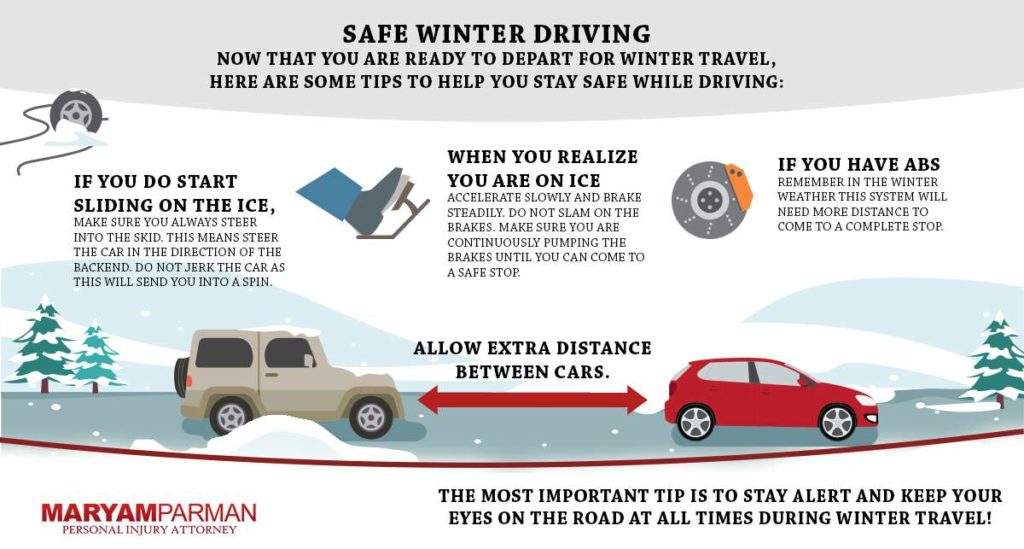Preparation is the key to survival when conditions are harsh. If you live in regions characterized by long winters, you would definitely know what we are talking about. Let’s face it: Winters are harsh and unforgiving, not only for us but for our vehicles as well. If we don’t prepare ourselves and our vehicles for winter conditions, the merciless weather will prove overpowering.
As far as our vehicles are concerned, they perform best under standard conditions of temperature and pressure. Since winters are usually extreme, it is imperative that you prepare your vehicle to handle such conditions or else you could risk damage to the vehicle along with a serious threat to your own safety on the road.
To protect your vehicle in winters, you don’t need to cover it with a blanket. You need to take care of some simple things to make sure your vehicle is in peak condition to tackle unfriendly conditions like cold temperatures, wet slippery roads, snow, rains and other uncertainties.
Before the onset of winter, make sure you either get your vehicle serviced properly by a qualified mechanic or follow these steps to boost its immunity.
Get Your Vehicle Serviced Properly!
Oil Change
Make sure you have changed the engine oil/motor oil in your vehicle before approaching winter. Usually engine oil needs to be changed after every 3000 to 5000 miles. You need to check your vehicle’s maintenance log to know whether your vehicle requires an engine oil change. If there has been no engine oil change in the past 6 months, you should definitely consider one to avoid damage to your engine during winter.
Coolant Change
The antifreeze or coolant level in your vehicle also needs to be checked. The coolant reservoir should be full and the radiator filled to the brim. Usually, 50{f1f9f9c01afd80b5cbf5eb62b4dc52c71b03eb6f2de9df6e3a106729f0c3810b} water is mixed in proportion with the antifreeze, but it is advisable to fill your vehicle with only antifreeze before winter as water can freeze at cold temperatures. Since antifreeze keeps the engine cool, lack of it due to freezing or decreased in level can result in an overheated engine.
Tire Change
It is important that the tires in your vehicle are suitable for winter driving (All weather tires) and that they have a tread depth of around 4/32 of an inch to tackle the cold, wet and usually slippery roads in winter. You can ask a mechanic to gauge the depth of tire treads or buy a tread measuring device and do it yourself. These devices are available at local auto parts stores. You can also check if your tires need a replacement by locating the “wear bars” on them.
These are rubber marks located within the treads all around the circumference of tires. If the treads have reached the level of these wear-bars, the tires need to be replaced. Also, maintain the tire pressure at recommended levels and monitor it every 2 weeks during winter. Tires tend to lose pressure quickly in cold weather. You must also keep a fit spare tire in your vehicle in case the need arises.
Windshield Wipers
You might need to replace the windshield wipers every year and it is always advisable to do it before winters. Some wipers can even last longer and it is up to you to ascertain whether the wipers in your car are doing their job or not. On a rainy day or perhaps in the snow, a windshield wiper will definitely be a friend and a helping hand while you drive.
Lights
Each light in your vehicle is very important under any condition, but even more so in winters. In climates characterized by low light, rain, snow, fog etc., lights not help with your visibility but also for the visibility of other vehicles and pedestrians on the road. Each light has its own function and their importance is accentuated during the dark and hazy winters.
Battery
Make sure your car battery is producing at least 12 volts of charge. You can check this by connecting a normal voltmeter to the battery. In case it is not doing so, you should consult a battery mechanic. A discharged battery can stand you in the middle of nowhere and that is bad in any condition let alone in winter.
Apart from These Basic Maintenance Tips, You Must Also Consider Some Winter Driving!
Tips for Your Safety and That of Your Vehicle
Keep a Safe Distance from Other Vehicles
Since there are chances of skidding, apply brakes gently instead of stomping the pedal. The stopping distance in winters is usually exaggerated.
Drive at Low Speeds
Winter conditions are uncertain and cold and wet roads can pose a threat even to the most experienced of drivers and the most advanced of cars. Precaution is the first prerequisite to safety.
Don’t Push the Engine to Higher Revs
More acceleration means more chances for the tires to skid under wet, snowy and mucky conditions.
A Garage Is Always the Best Place to Park the Vehicle Overnight
If you park your vehicle outside in the cold, there are more chances that you might experience problems starting up in the morning. Also, it is advisable to avoid parking your vehicle on the roadside in wet and snowy weather since there is a great danger from skidding vehicles. Parking under trees is also discouraged in winter as dry trees tend to succumb to heavy rains and weight of the snow.
If you take care of some simple things before setting off in your vehicle during winters, you will definitely not experience any problematic journeys due to extreme weather conditions. A bit of preparation and a bit of restraint is the key to a harmless winter.
Be careful during winter and get in touch with us if you suffer an accident!


